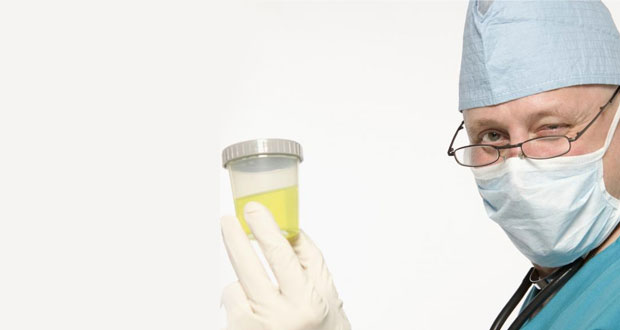Urine isn’t something most people talk about. Yet changes in the urine — its colour, odour, and consistency — can provide important clues about the status of your body. Your urine can reveal what you’ve been eating, how much you’ve been drinking, and what diseases you have.
“Urine and urinalysis have, for hundreds of years, been one of the ways physicians have looked at health.
Urinalysis was one of the original windows into what’s happening in the body. Many of the substances circulating in your body, including bacteria, yeast, excess protein and sugar, eventually make their way into the urine.
Urine is an important part of the body’s disposal process. Its job is to remove the extra water and water-soluble wastes the kidneys filter from the blood. The urine is there primarily to get rid of toxins or things that would otherwise build up in the body that would be bad for the body.
Before you flush, here are a few urine changes to look out for, and what they might be saying about your health.
Colour Changes
Urine gets its yellow colour from a pigment called urochrome. That colour normally varies from pale yellow to deep amber, depending on the concentration of the urine. Darker urine is usually a sign that you’re not drinking enough fluid. “Your body needs a certain amount of fluid to function, so the body will hold on to fluid and the urine will become very strong and concentrated. When that happens, it will turn a darker colour,
The opposite is also true. If your urine is very pale, it means that you’re either drinking a lot of fluid, or you’re taking a diuretic — a drug that forces the body to get rid of excess water.
Urine can turn a rainbow of colours, and an unusual hue isn’t necessarily cause for alarm. Certain medications can turn the urine fluorescent green or blue, carrots can tint it orange, vitamins can give it a yellow hue, and an inherited disease called porphyrins can shade it the colour of port wine.
Seeing red is typically a sign that there is blood in the urine, but before you panic, know that a little blood can produce a dramatic color change. “What I always tell patients is it takes one drop of blood to turn a toilet bowl red,”
Blood in the urine can be a sign of something serious, like an infection, kidney stones or cancer, and it warrants a visit to your urologist. If you’re seeing blood and your urine is also cloudy, there’s a good chance you’ve picked up an infection.
Odour Changes
Urine normally doesn’t have a very strong smell. If you get a whiff of something particularly pungent, you could have an infection or urinary stones, which can create an ammonia-like odour. Diabetics might notice that their urine smells sweet, because of excess sugar.
Some foods can also change urine odour. Asparagus is among the most notorious.
How Often Do You Need to Go?
How often you need to go can be as important an indicator of your health as the color or smell of your urine. Most people take bathroom breaks about six to eight times a day, but you might go more or less depending on how much fluid you drink. If you’re constantly feeling the urge to go and it’s not because you’re drinking extra fluid, causes can include:
- Overactive bladder – involuntary contraction of the bladder muscle
- Urinary tract infection
- Interstitial cystitis — a condition that causes the bladder wall to become inflamed and irritated
- Benign prostate enlargement in men — growth of the prostate that causes it to squeeze the urethra and block the normal flow of urine out of the body
- Neurological diseases, including stroke and Parkinson’s disease
- Diabetes
The opposite problem — not going to the bathroom enough — can occur when there is a blockage or infection. Or, it can be the result of bad bathroom habits. Some people — especially teachers, surgeons, and anyone else who doesn’t have time for regular bathroom breaks throughout the day — tend to hold it in.
Delaying urination can be problematic. It stretches and then contracts repeatedly, but eventually it can stretch too much to bounce back. “The bladder can develop a chronic overdistension — a chronic emptying problem.
Developing Healthy Bathroom Habits
Take good care of your bladder, and it will thank you by helping you urinate regularly. To avoid having to make too many bathroom visits, stay hydrated, but not overhydrated. Drink whenever you’re thirsty, and adhere to the 3 litres a day recommendation, unless you have kidney problems or bladder stones, in which case you’ll need to increase your fluid intake).
If you’re getting up during the night to use the bathroom, stop drinking three to four hours before bedtime. Limit caffeine, which can irritate the lining of the bladder. Also watch your intake of alcohol, which can have similar effects.
Finally, don’t hold it in. As soon as you feel the urge to go, excuse yourself from whatever you’re doing and find a bathroom.
Urine flow
Reduced urine flow (speed ) is common in older men and women. In men it could be due to prostate enlargement, stricture urethra or weak bladder. In women it is commonly due to hormonal changes in menopause causing narrowing of urine passage.
 Urologist in Chennai | Robotic Urologist in India | Chennai Urology
Urologist in Chennai | Robotic Urologist in India | Chennai Urology

